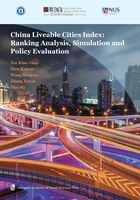
Chapter 1 Introduction
With better infrastructure build-up and improved provision of public services, more rural migrants are increasingly being attracted to settle in cities. However, this trend of rapid rural-urban migration has led to overcrowding of city dwellers thus created problems, such as worsening environmental pollution, traffic congestion and erosion in public services on housing, healthcare, education and transportation, which make cities less liveable. In such a context, the first conceptualization of liveability was introduced in the late 1960s in Canada, to tackle problems such as“participation, aesthetics, pollution control, more parks, neighbourhood preservation, and mixed land use”. This liveability terminology appeared in China's policy document in 2005, where the State Council emphasised that Beijing should become the pioneer liveable city in China. In 2019, President Xi Jinping emphasised that the concept of people-centred development must be carried out in urban construction. Cities should be comfortable for the public to live and work.
This introductory chapter will discuss urbanisation in China, especially the challenges brought by the overpopulation in the megacities, such as Beijing, Shanghai, Guangzhou and Shenzhen. In addition, this chapter will provide a literature review on the concept of liveability and the liveable city indices developed by various international organisations.